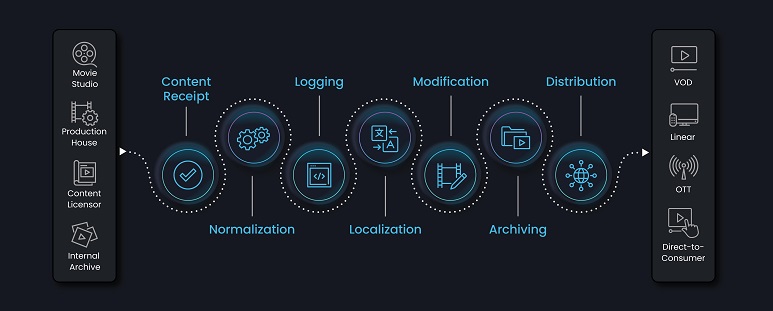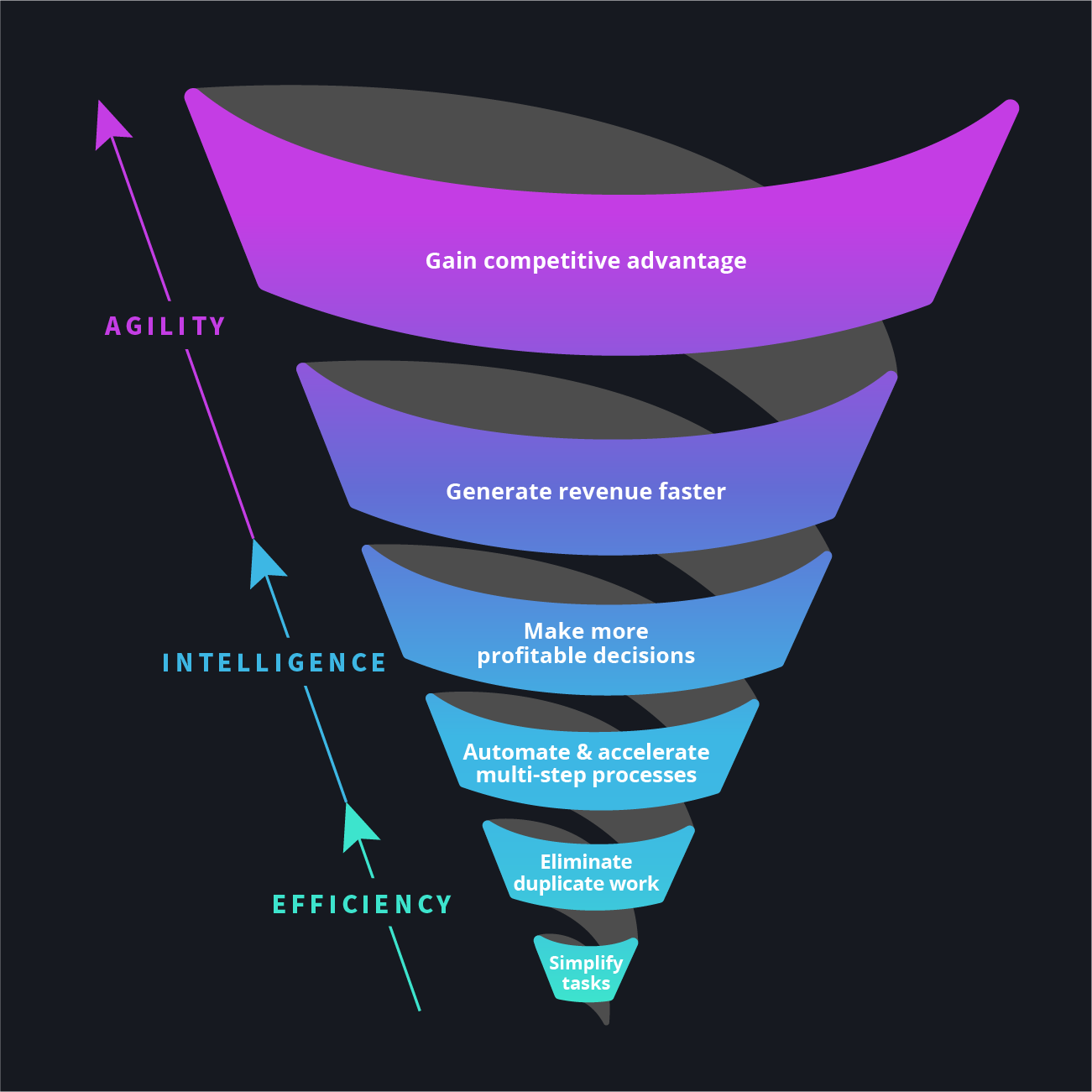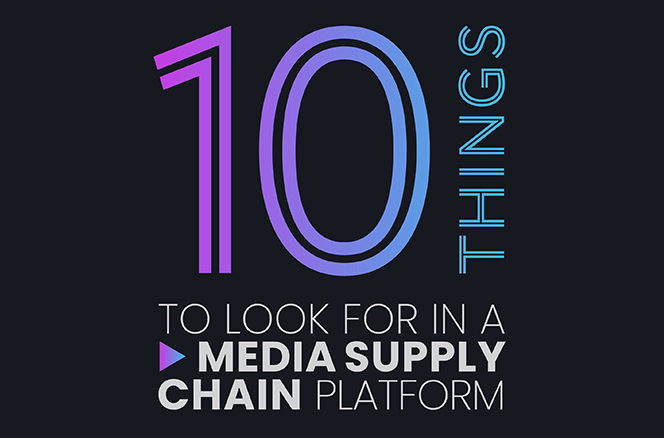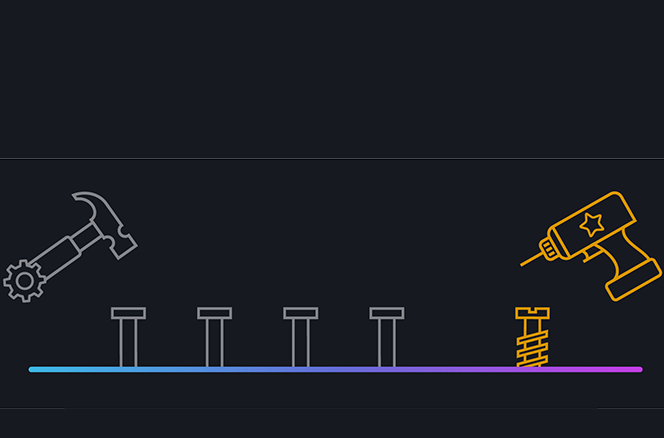How Cumulative Optimization Compounds Value and Creates a Competitive Advantage
In today’s ultra-competitive media market, media companies are faced with the dual challenge of producing and delivering great content while making it easy and frictionless for consumers to find and consume that content. Content is, and always will be, king. But now there’s a new queen of marketplace success, and it is about quality of experience: ensuring that customers have a great experience from content discovery all the way through content consumption. But how do media companies find the resources to invest in creating experiences that will delight customers? One place to look is at their media supply chain.
In case you’re wondering how supply chains affect the customer experience, just look at what’s happening across almost every industry. Today’s news is full of stories about goods and services shortages caused by supply chain disruptions. From groceries to sneakers to furniture, consumers face higher prices, limited or no availability, and uncertainty about delivery timeframes. In short, the customer experience suffers when supply chains are not operating at maximum efficiency.
The Media Supply Chain
While digital media delivery doesn’t suffer from driver shortages or component availability, ensuring that content reaches the widest possible audience does require the preparation and delivery of that content to reach consumers on any device, at anytime, anywhere around the world. Like any product business, media companies receive raw materials and move them through a series of preparation processes. Once a show is delivered from a content producer, the company must perform a series of checks and make modifications to prepare it in a final form suitable for viewing by all audiences.
Content preparation includes steps that verify accuracy (QC), log and add critical metadata, modify language (audio and captions) as necessary for different markets, occasionally modify the content to meet compliance requirements, and finally transcode and package the show into a multitude of formats for all delivery platforms. This is the media supply chain, and the more efficient and productive it can be, the more content a media company can prepare for viewers.
While the processes associated with the media supply chain are well known and have been operating for years, they’ve been implemented generally on fixed infrastructure that lacks the ability to adapt quickly to changes in the market. Most media processing is done in a datacenter using on-premise servers, storage, networking and licensed applications. It’s reliable and works, until it can’t meet demand. Or until it can’t fulfill a new content agreement. Adding new infrastructure to a datacenter and getting it ready for the work required takes time, investment, and resources, all of which can be in short supply when that media company is also trying to compete for viewers.
Optimizing the Media Supply Chain
Key to meeting the competitive challenges that media companies face is optimizing their media supply chains. But what does that mean? Let’s look at a definition of optimization. According to the Oxford Dictionary of English, optimization is “the action of making the best or most effective use of a situation or resource.” From a supply chain perspective, optimization therefore means the assignment or utilization of appropriate resources to a task based on a technical or commercial rationale. For media companies, media supply chain optimization seeks to identify every step from ingest to distribution and the optimal set of resources to apply to each step to complete the work required at any given point in time. Full optimization is an enterprise approach that delivers compounding value as more steps across the supply chain are virtualized, automated, and instrumented.

The Cloud Changes Everything
But what does full optimization look like, and how do you get there? One key to optimization is resource utilization. Much of the media supply chain can be automated, using media processing and analysis applications to perform the bulk of the work. This work can be unpredictable, which makes deploying on-premise infrastructure inherently inefficient as there will undoubtedly be periods of under-utilization, and missed deadlines when capacity is maxed out. Here is where the cloud changes the game. Migrating media supply chains to the cloud enables media companies to use the infrastructure provided to them by the cloud provider on an as-needed, per-use basis. Manual operators can use cloud-based tools to manage exceptions or perform work that requires human decisions while letting software applications automate bulk media processing.
Cloud-based media supply chains also benefit from the built-in scalability of the cloud. When demand for content spikes, you can easily provision more resources to handle the increased load. When demand wanes, you can spin down those resources to use only what’s required. Cloud resources also provide flexibility to change applications, or to use multiple applications and match the tool to the type or value of the work required. Cloud-based services provide all the infrastructure needed without requiring upfront capital investment or management overhead. Similarly, platform services, such as SDVI Rally, help orchestrate the work required and deploy the resources needed to simplify supply chain management. And application services provide media processing when required, and on a per-use consumption basis. Collectively, these services execute the supply chain requirements while freeing up internal resources to focus on higher-value work, such as perfecting the customer experience.
The Compounding Value of the Modern Media Supply Chain
Much of what we’ve described so far has related the optimization of the media supply chain to its impact on supporting the customer experience. The more resources a media company can apply to that challenge, the better. But in addition to freeing up resources, media supply chain optimization also delivers additional compounding operating value that enables media businesses to build other competitive advantages.
When you automate a process within your supply chain, cost reduction is often the most notable and desirable result. But when you analyze, orchestrate, and optimize each of the multiple processes across your supply chain and then link them together, you get a value result far beyond cumulative efficiencies and cost reductions. Much more than a sum of the parts, the compounding value you realize through end-to-end supply chain optimization has the power to drive business transformation.
As you move toward full supply chain optimization, as the Rally platform allows you to do, you build an infrastructure that empowers your company to capitalize on new market opportunities, strike new partnerships, and increase your profitability. Your supply chain gives you a competitive advantage.
Rally users very quickly realize that, yes, the platform is enabling efficiencies that save them money. But they’re often more struck by the impact of being more agile and adaptable, as well. They are in a better position to maximize revenue. They can pivot to spin up new services — basically a new supply chain in the cloud — and spin them down if they’re not delivering satisfactory results. Knowing exactly what it will cost to make content ready, they can make better business decisions and pursue only those opportunities that will make them more profitable.
The rest of this blog series will look more closely at supply chain modernization, exploring the phases of continuous improvement and how the benefits of optimization multiply as you go. The next post will focus on Efficiency, and discuss the first steps of optimization, which are to simplify tasks and eliminate duplicate work. In this early phase of optimization, you begin to reimagine and redefine your supply chain, better aligning discrete tasks with the right tool for each job and removing unnecessary duplication.

The following post will examine how optimization both creates, and benefits from, Intelligence. With a focus on automating and accelerating multistep processes, we explore how the logic of the supply chain itself gives people the information they need to make better, faster decisions. Rather than spend time on mundane tasks, your team can focus on critical and timely tasks requiring their attention. The parallel focus on making more profitable decisions is a clear extension of the earlier phases, and it’s all about having predictive data that you can apply against a business decision and know it will make you money. You no longer have to guess; you know your costs to prepare content and what you stand to gain (or not) from any deal. We’ll explain how that works and what it looks like in a real-world application.
The final post in this series will look at the Agility businesses gain as they go through the optimization process. When we talk about generating revenue faster, we mean not just the ability to make decisions more rapidly, but also the agility to turn opportunities into revenue more quickly. Even in trying out new services, an optimized supply chain reduces the time and money (risk) required to test and launch a new project. And finally, we turn to gaining the competitive advantage, where we bring it all together. We’ll look at how the infrastructure built through these phases yields compounding value that turns your supply chain into an engine for business growth.
Read the next post in this series, “Optimization Begins with Greater Efficiency and Productivity“.



